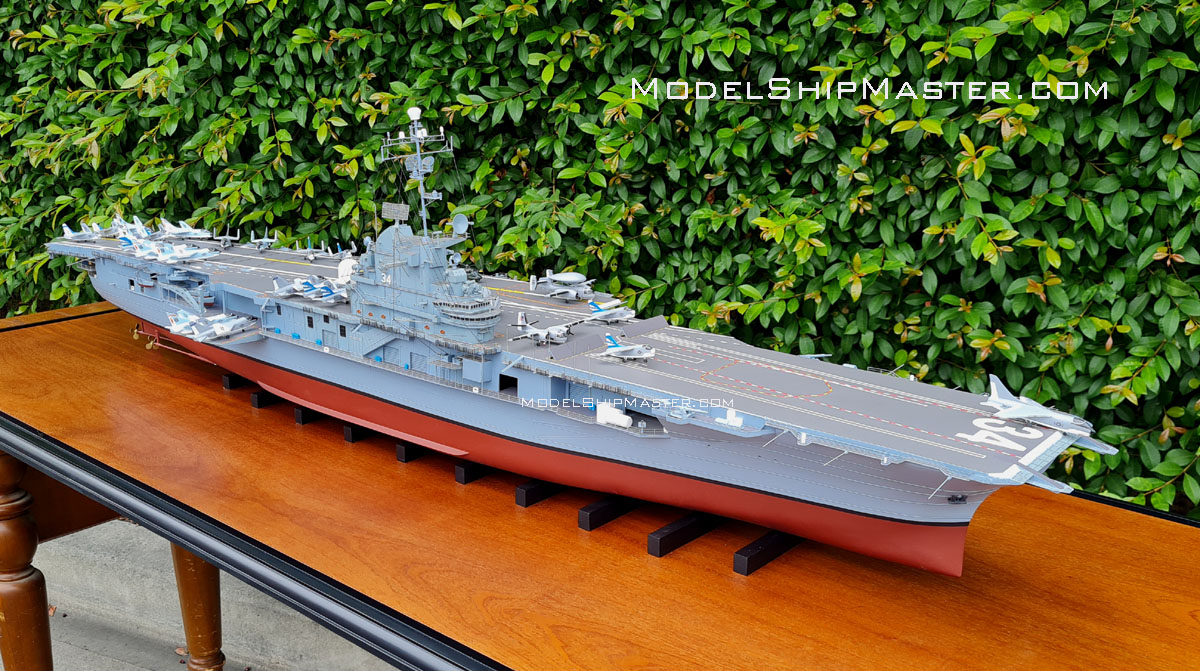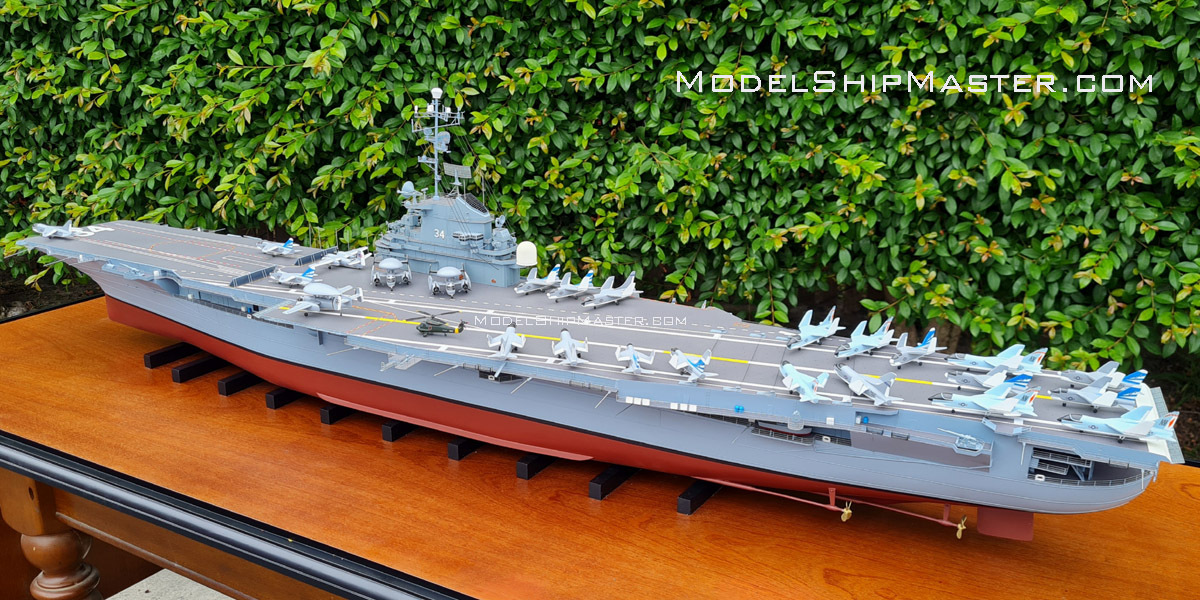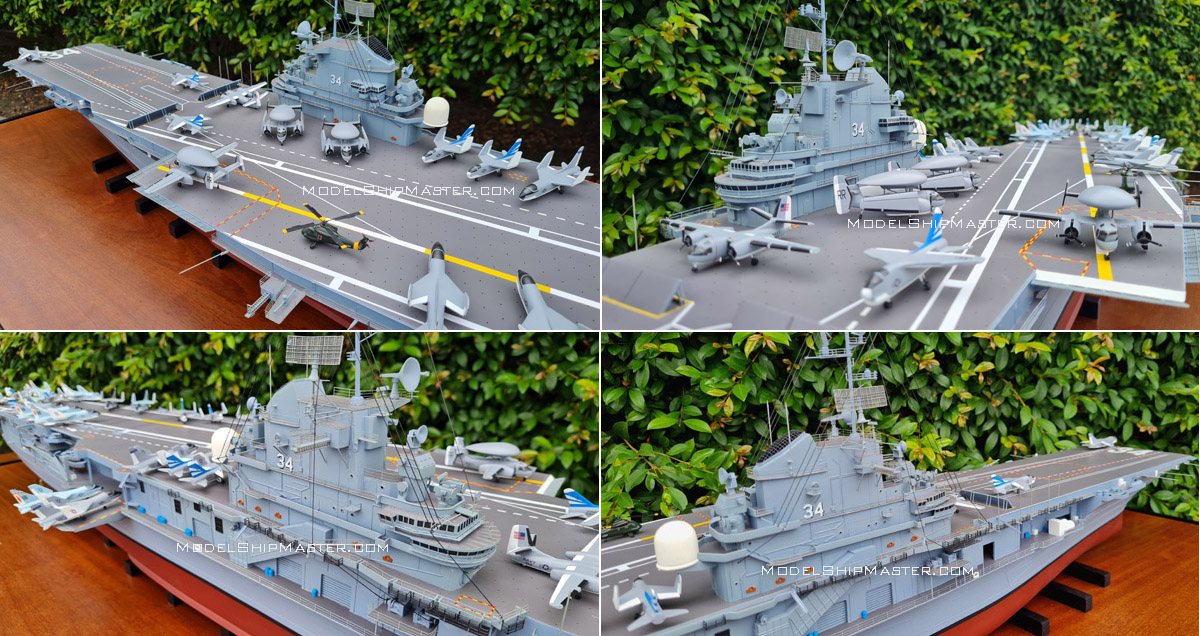|


256-bit encryption
$500,000 protection

|
USS ORISKANY

USS Oriskany was an Essex-class aircraft
carrier. The ship was named for the Battle of Oriskany
in the Revolutionary War. Commissioned in 1950, she was
the final Essex-class ship completed.
USS Oriskany was originally designed as a
"long-hulled" Essex-class ship. Her construction was
suspended in 1946 after the end of World War II. She
eventually was converted to an updated design called
SCB-27. This updated version became the template for
modernization of 14 other Essex-class aircraft carriers.
On 13 August 1956, USS Oriskany returned
to San Francisco, and entered the shipyard to undergo
the SCB-125A modernization program. She received a new
angled flight deck, aft deck edge elevator, enlarged
forward elevator, and enclosed hurricane bow. Powerful
new steam catapults replaced the older hydraulic
catapults. The wooden flight deck planking was also
replaced with aluminum planking.

The SCB-27 modernization was very extensive, requiring
some two years for each carrier. To handle the much
heavier, faster aircraft of the early jet-era,
the flight deck structure was significantly reinforced
to support aircraft weighing up to 52,000 pounds.
Stronger and larger elevators, much more
powerful catapults, and new Mk 5 arresting gear were
installed. The original four twin 5-inch/38 gun mounts
were removed, clearing the flight deck of guns. The new
5-inch gun battery consisted of eight weapons, two on
each quarter beside the flight deck. Twin 3-inch/50
gun mounts replaced the 40 mm guns, offering much
greater effectiveness through the use of proximity fuzed ammunition.
The reconstruction eliminated the difference between
"short-hull" and "long-hull" ships; all now had similar
clipper bows.
The island was completely redesigned, made taller, but
shorter in overall length with the removal of its gun
mounts. In addition, the boiler uptakes were rebuilt and
angled aft to accommodate a single radar and
communications mast atop the island.
Internally, aviation fuel capacity was increased to
300,000 gallons (a 50% increase.) Fire fighting
capabilities were enhanced through the addition of two
emergency fire and splinter bulkheads to the hangar
deck, a fog/foam firefighting system, improved water
curtains and a cupronickel fire main. Also improved were
electrical generating power, and weapons stowage and
handling facilities. All this added considerable
weight: displacement increased by some twenty percent.
Thus, the armor belt was removed and blisters were
fitted to the hull sides to compensate, widening
waterline beam by 8 to 10 feet. The ships also sat lower
in the water. Maximum speed was 31 knots.
On 5 April 2004, the Navy
announced that it would transfer the former USS Oriskany to
the State of Florida for use as an artificial reef.
Oriskany was the first United States warship slated to
become an artificial reef. Oriskany was towed to
Pensacola in December 2004. After the EPA's approval, a
team of Navy personnel accomplished the sinking of the
ship on 17 May 2006. A Navy Explosive Ordnance Disposal
team detonated C-4 explosive charges of approximately
500 lb. The ship sank stern first in 210 ft of water in
the Gulf of Mexico.
As was intended, the ship
came to rest lying upright. The flight deck was at a
depth of 135 ft, and its island rose to 70 ft. Following
Hurricane Gustav in 2008, the ship shifted 10 feet
deeper leaving the flight deck at 145 feet. The island
structure is accessible to recreational divers, but the
flight deck requires additional training and equipment.
It is now popularly known as the "Great Carrier Reef", a
reference to Australia's Great Barrier Reef. The Times
of London named the Oriskany wreck as one of the top ten
wreck diving sites in the world.
A pilot on the USS
Oriskany shot down four Soviet fighter jets in 1952, and
became a legend no one would hear about for more than 50
years. Click here to read an exciting article about
Williams flying the F9F Panther in action: https://www.cnn.com/2023/01/20/asia/korean-war-fighter-pilot-soviet-shootdown-intl-hnk-ml/index.html
USS Oriskany was featured in the movies Men of the
Fighting Lady and The Bridges at Toko-Ri,
filmed just a few months after the end of the Korean War
and released in May and December 1954.

This primarily wood model
of the aircraft carrier depicts the USS Oriskany
aircraft carrier during the Vietnam war. It
is 53"
long (1/200 scale). Airplane included: A-7 Corsair, F-8, RF-8G
Crusader, E-1B Tracer, Grumman C-1 Trader, SH-2
Seasprite.

Learn more about the USS Oriskany
here: https://en.wikipedia.org/wiki/USS_Oriskany_(CV-34)
|